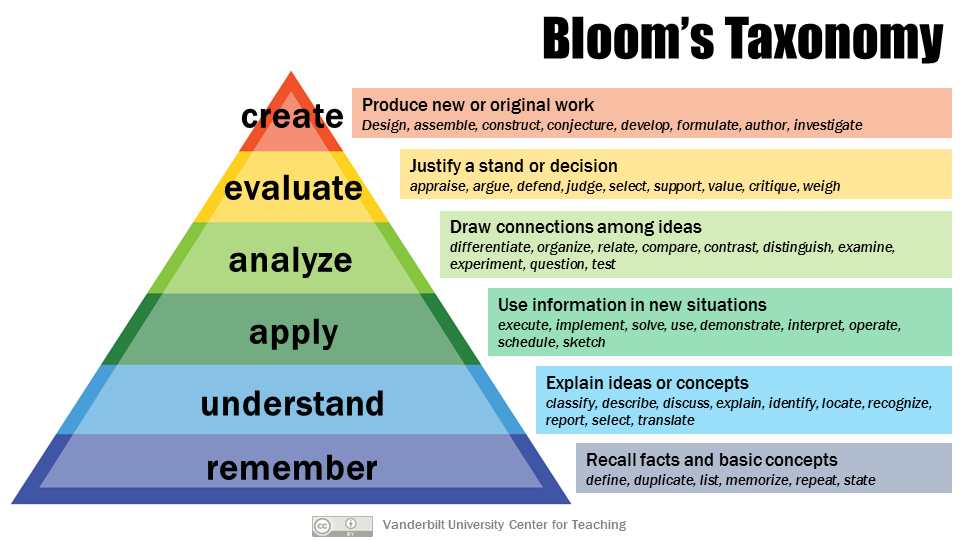
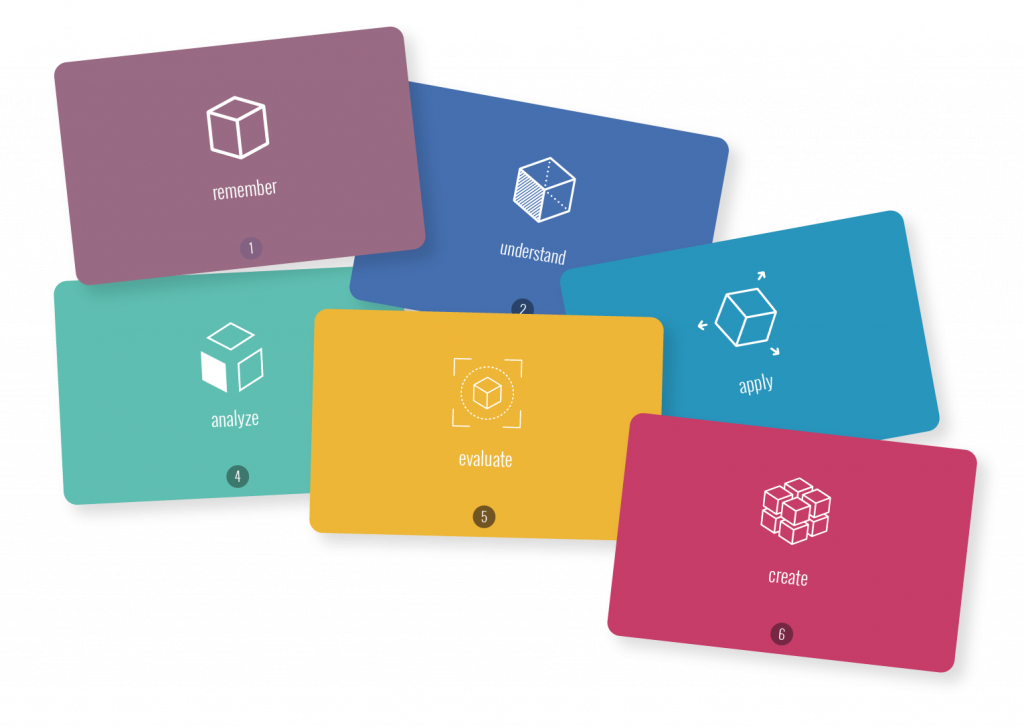
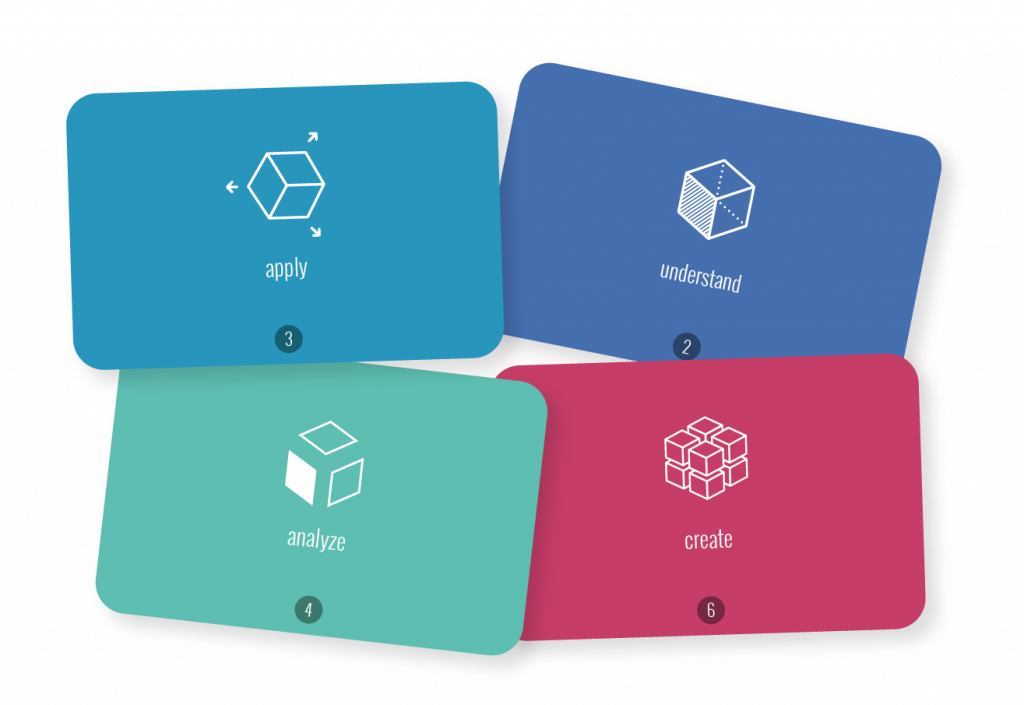
About the
Learning
Objective
Design
Deck
Design effective learning outcomes.
The Theory Behind
The Learning Objective Design Card Deck is a practical tool to make the process of defining learning objectives and assessment strategies for any type of educational experience easier, creative, collaborative and even fun. The cards and the method to use them is based on long and well established research in Pedagogy and Education Sciences. This is a brief overview of the theory behind the card deck, why and when it is useful to use it as well as some tips on how to get the most out of it.
Background
The Taxonomy of Educational Objectives, published in 1956 by Benjamin Bloom and collaborators, widely known as Bloom’s Taxonomy, is a framework to categorize and describe educational goals. The Taxonomy has been used by generations of teachers and instructors in their practice to better define the learning obectives of their educational interventions.
More recently, in 2001, the original Bloom’s Taxonomy was reviewed by a group of psychologists, instructional and curriculum researchers that published A Taxonomy for Teaching, Learning, and Assessment, also familiarly know as the Revised Bloom’s Taxonomy.
The revised taxonomy substituted the nouns of the original taxonomy with more dynamic verbs and gerunds to emphasize the dynamic nature of learning. These verbs address the cognitive dimensions, the different types of thinking processes learners encounter and practice while acquiring new knowledge and skills.
The revised taxonomy also introduced a separate taxonomy of distinct types of knowledge used in cognition: Factual Knowledge; Conceptual Knowledge; Procedural Knowledge; Metacognitive Knowledge. As a result, the revised version of Bloom’s taxonomy provides a more granular, precise and more importantly action oriented approach to learning objective design.
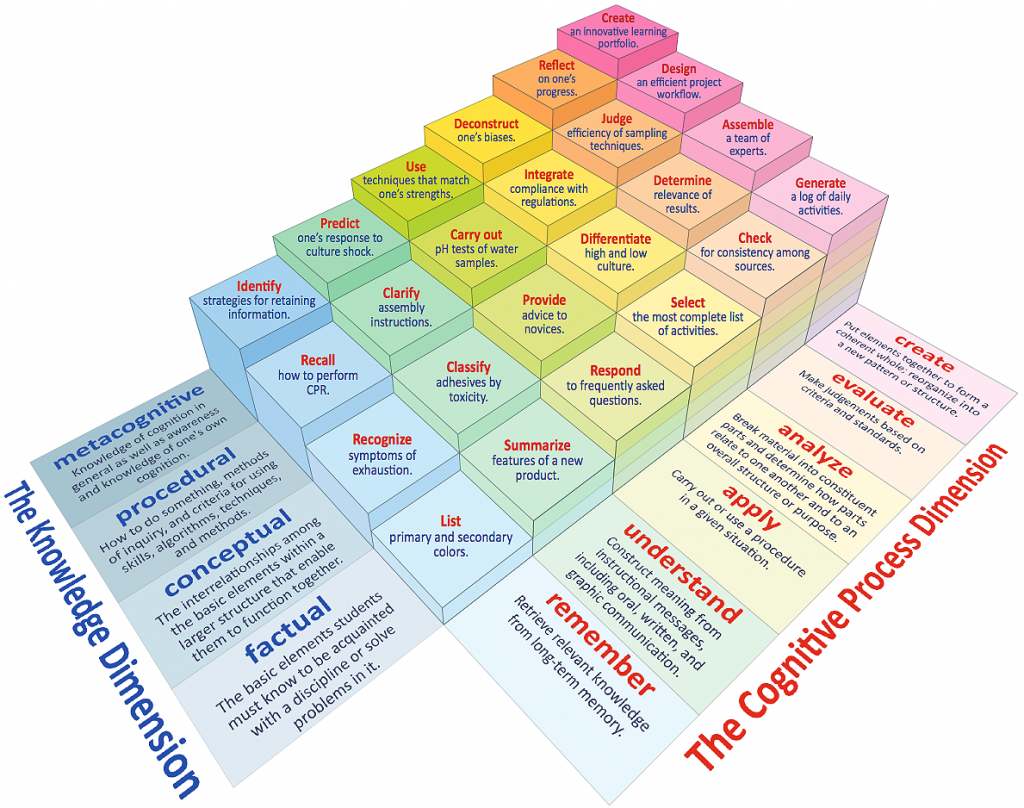
This approach is especially suited to active learning and problem-based approaches and other contemporary ways to structure learning experiences. Moreover the revised version, with its action-verbs and process oriented approach, allows educators to frame and define learning objectives with a learner-centred approach right from the initial steps of the learning design process.
When and Why it is used
Defining learning objectives before any educational experience is an established best practice. Bloom’s taxonomy is a powerful framework that can be used to construct, articulate and write the learning outcomes of a program, a course or a learning unit.
According to Vanderbilt University’ Center for Teaching, learning goals support both teachers and learners alike to understand the pedagogical interchange within the learning environment. Organizing such goals as structured sets of learning objectives provides clarification for both teachers and learners. They also help teachers to “plan and deliver appropriate instruction”, “design valid assessment tasks and strategies” and “ensure that instruction and assessment are aligned with the objectives”.
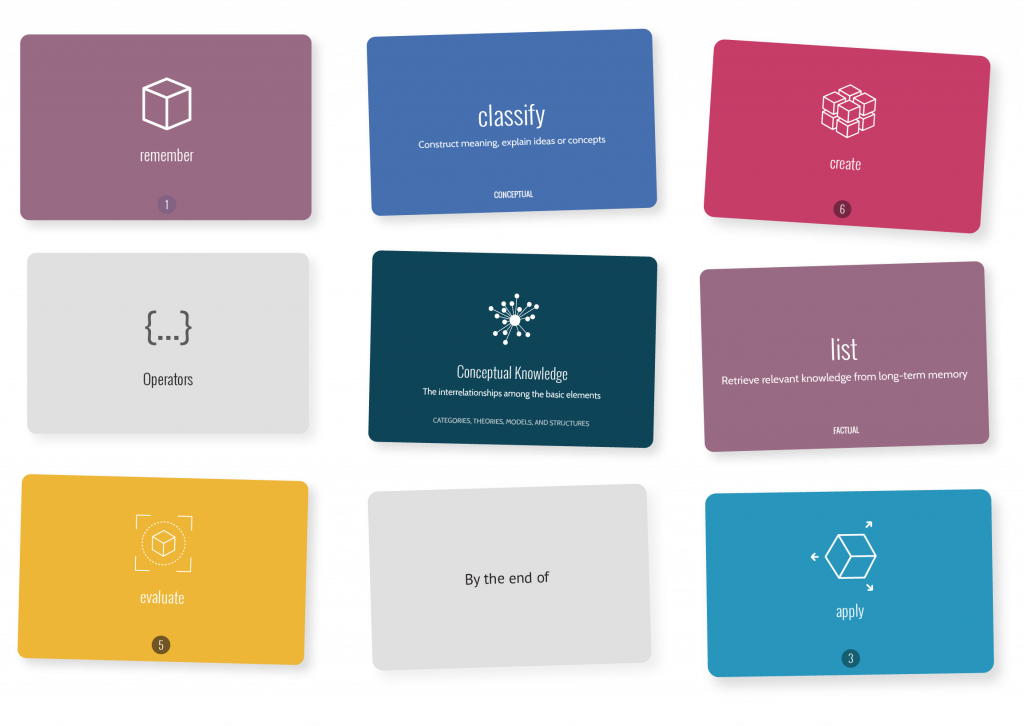
The Learning Objective Design Deck
The Learning Objective Design Deck takes the elements of Bloom’s framework and turns them into a set of modules – the cards – that can be manipulated and composed in a natural and easy way. The modular and interactive nature of the deck makes the process of ideating, constructing and writing learning objectives less abstract and more tangible.
The cards translate the taxonomy and its conceptual model into a practical tool and allow the framework to be used in a more dynamic and playful way.
The deck also adds a narrative-like compositional strategy to compose meaningful learning objective sentences and statements. Thanks to the operator cards – which provide bits of truncated sentences that need to be completed – the learning objectives can be designed in a learner-centred and actionable way.
Used in brainstorming-like sessions, the deck facilitates the design process and potentially unleashes out-of-the-box thinking, fostering discussion, creativity and collaboration when used in group settings. The Learning Objectives Design Deck helps to produce fast tangible results that are ready to be used in the design of educational experiences, course outlines, curriculum and syllabus design, etc.
THE CARDS
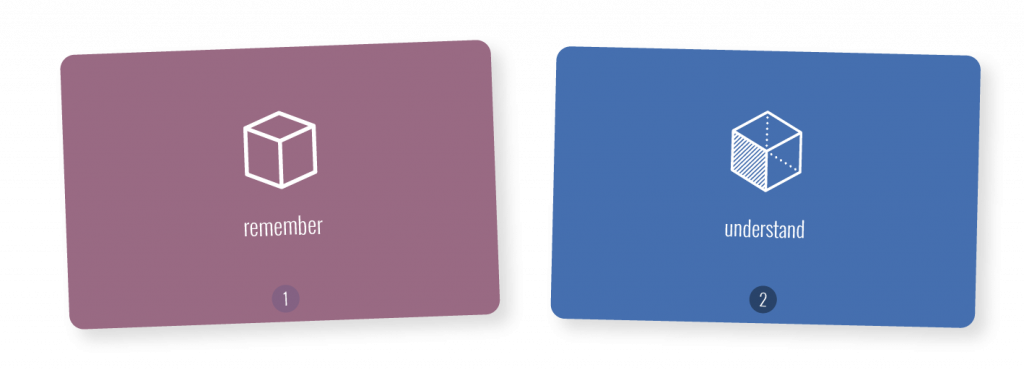
Cognitive Dimensions
The cognitive dimensions from Blooms’ taxonomy are represented in the deck with its six layers of remember, understand, apply, analyze, evaluate and create.

Knowledge Dimensions
There are four distinct types of knowledge embedded in the deck: Factual Knowledge, Conceptual Knowledge, Procedural Knowledge and Metacognitive Knowledge.
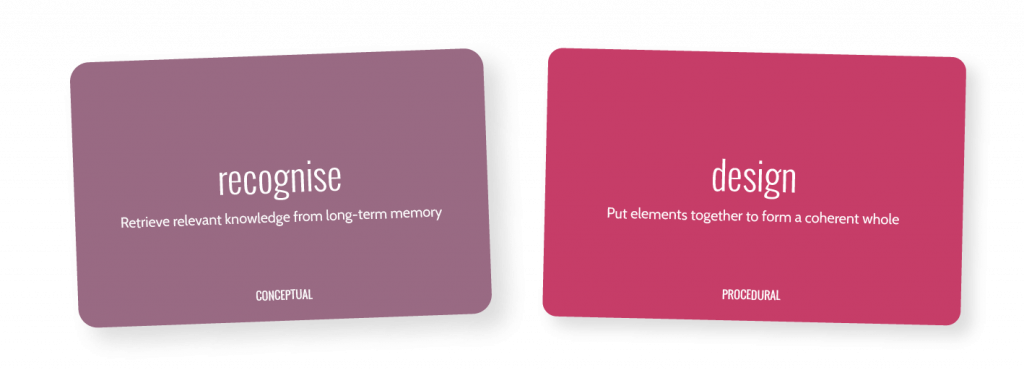
Verbs
Each of the six cognitive dimensions is represented through four verb cards, one for each knowledge dimension from the revised Bloom’s Taxonomy.
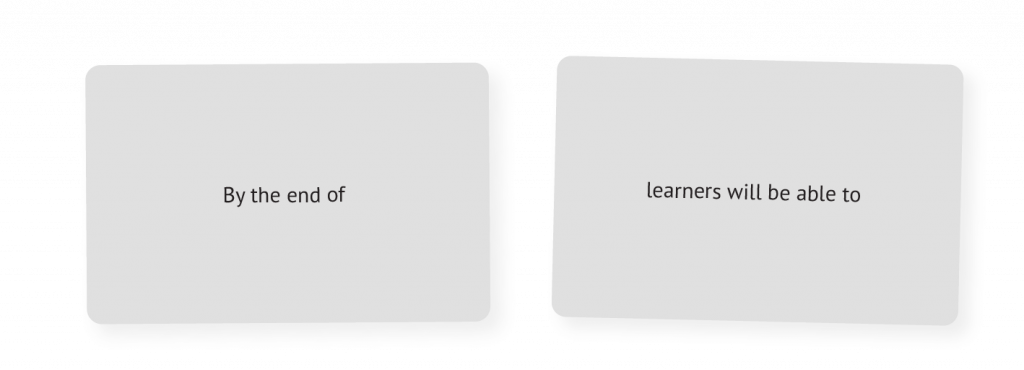
Operators
Together with operator cards, the verb and knowledge dimension cards are used to write learning objectives and assessment strategies for any educational context.
Use the Learning Objective Design Deck to plan effective learning outcomes for any educational context.
Learning Objective Composition
The operator cards are used with the verb cards to construct statements that constitute learning objectives in form of descriptive sentences. The cards guide the interactive process of articulating learning outcomes for any educational context. Results are ready for immediate usage, e.g. in tutorial descriptions, project requirements or curriculum outlines etc. The Learning Objective Design Deck supports the creation of consistent and coherent learning objectives through separation of structural integrity and learning content. This allows quick ideation with direct tangible output.
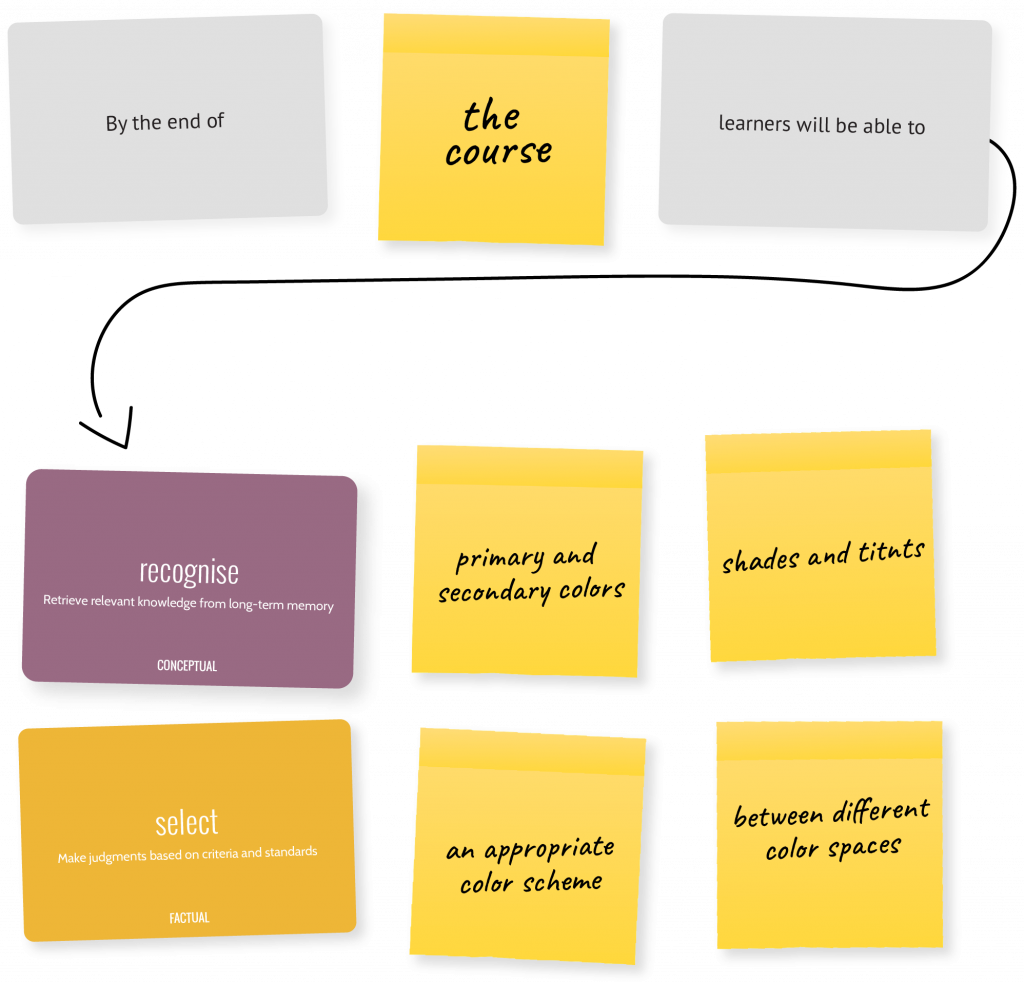
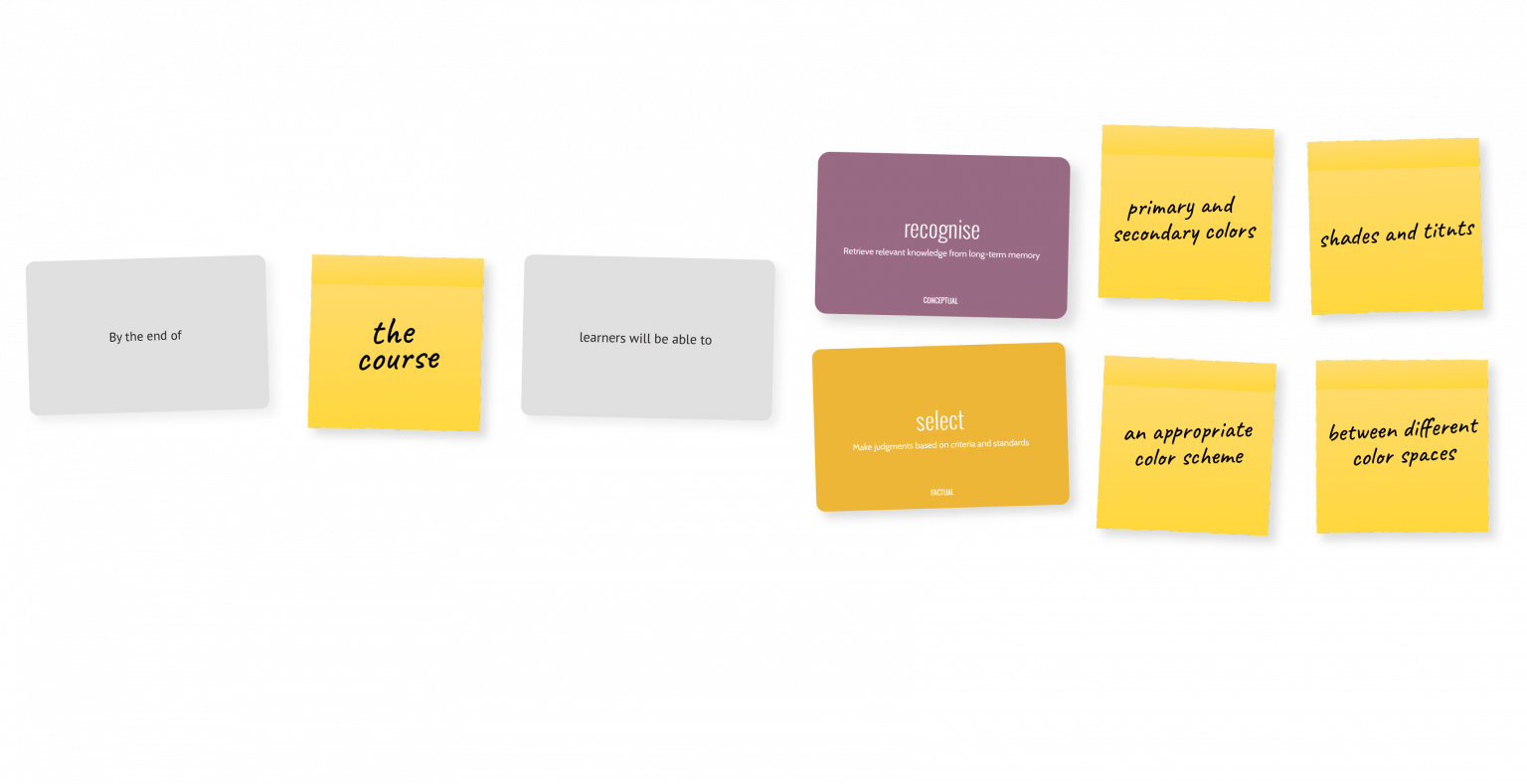

Advanced Learning Objective Composition
For a more in-depth adaptation of the revised Bloom’s Taxonomy, the knowledge dimension cards of the Learning Objective Design Deck can be used. They augment the process of articulating learning objectives through a systemic consideration of different types of knowledge. By covering all relevant knowledge dimension in all its cognitive dimensions, eventual gaps can be avoided. Resulting sets of learning objectives are ensured to be consistent and coherent within the framework without losing track of individual layers within the taxonomy.
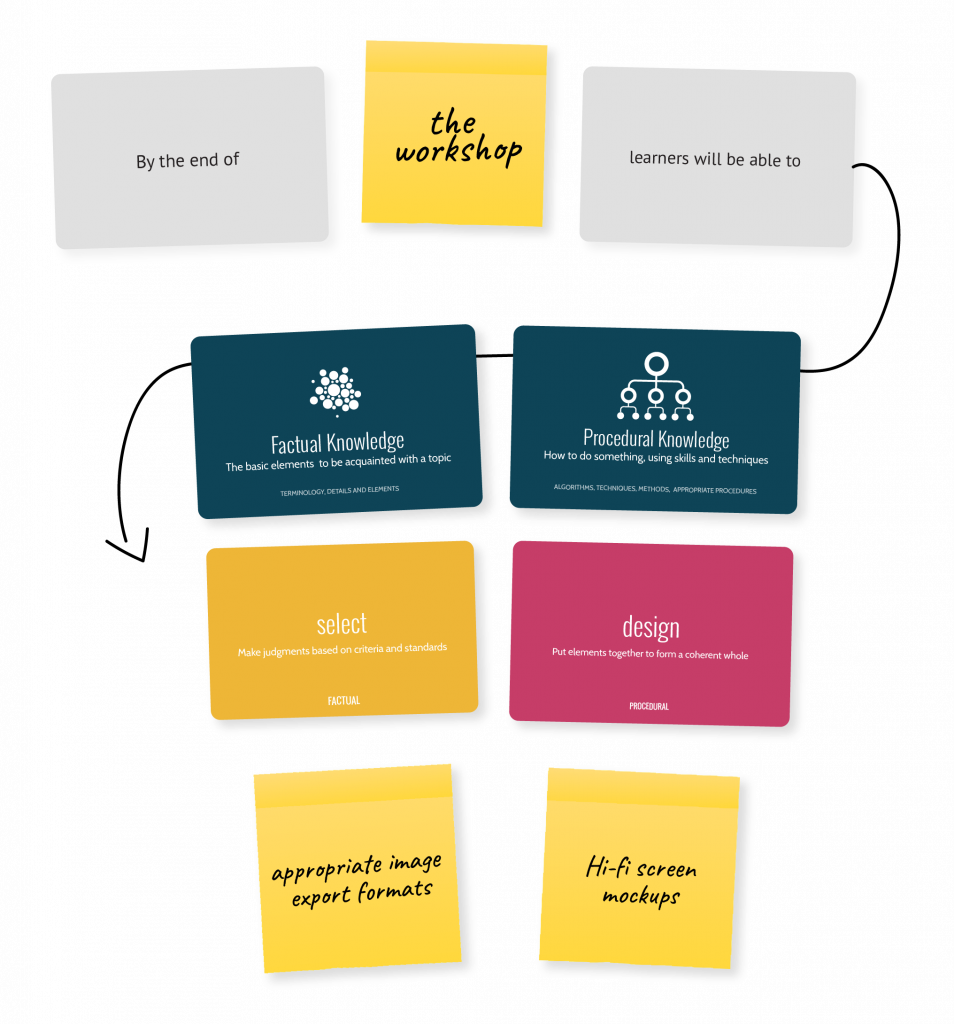
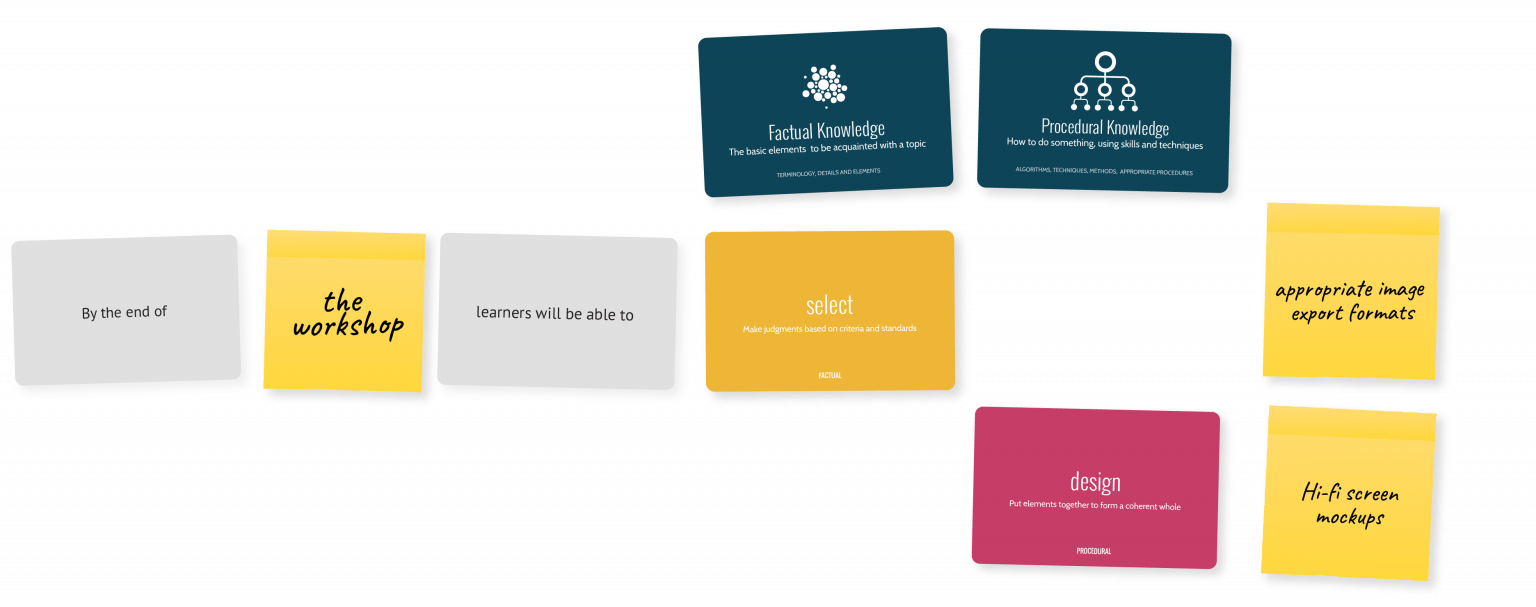

Assessment Strategy Composition
Beyond articulation of learning objectives, the Learning Objective Design Design can also facilitate the composition of assessment strategies. Adopting a similar narrative process, different operator cards can be used to construct evaluative statements. These guide the selection of appropriate assessment mechanisms to address the distinct knowledge and cognitive dimensions for any learning topic. By separating the structural integrity within the framework from learning content, assessment strategies can easily be aligned to connected learning objectives. This allows quick ideation with direct tangible output.
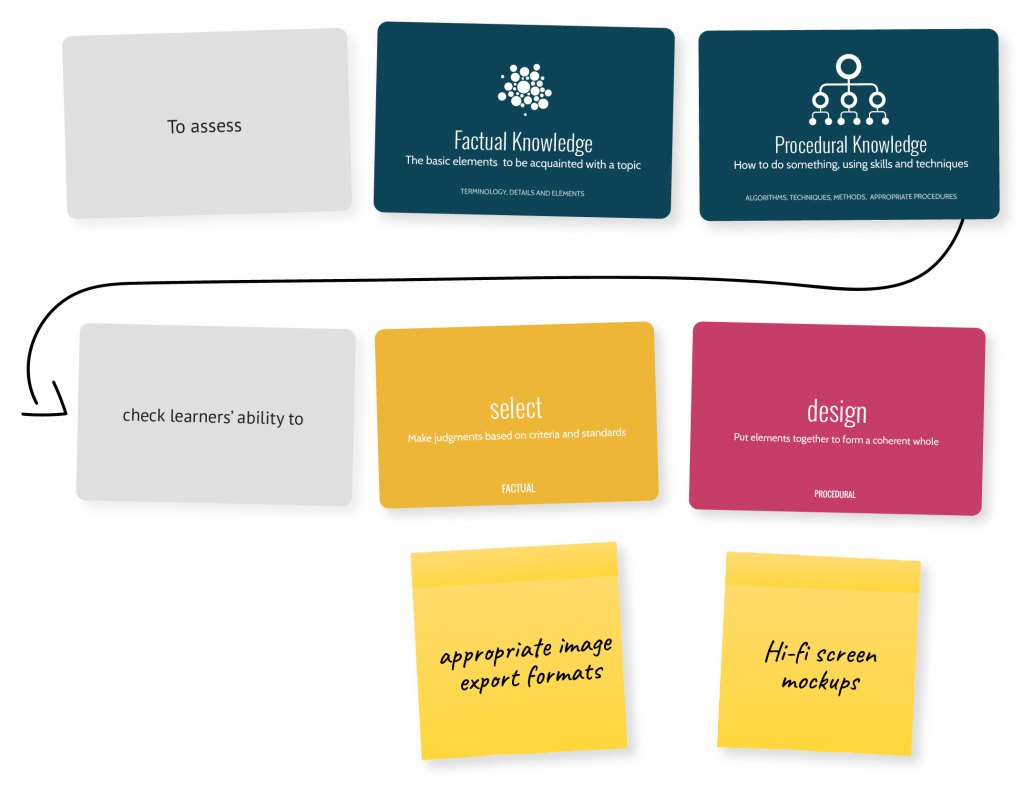
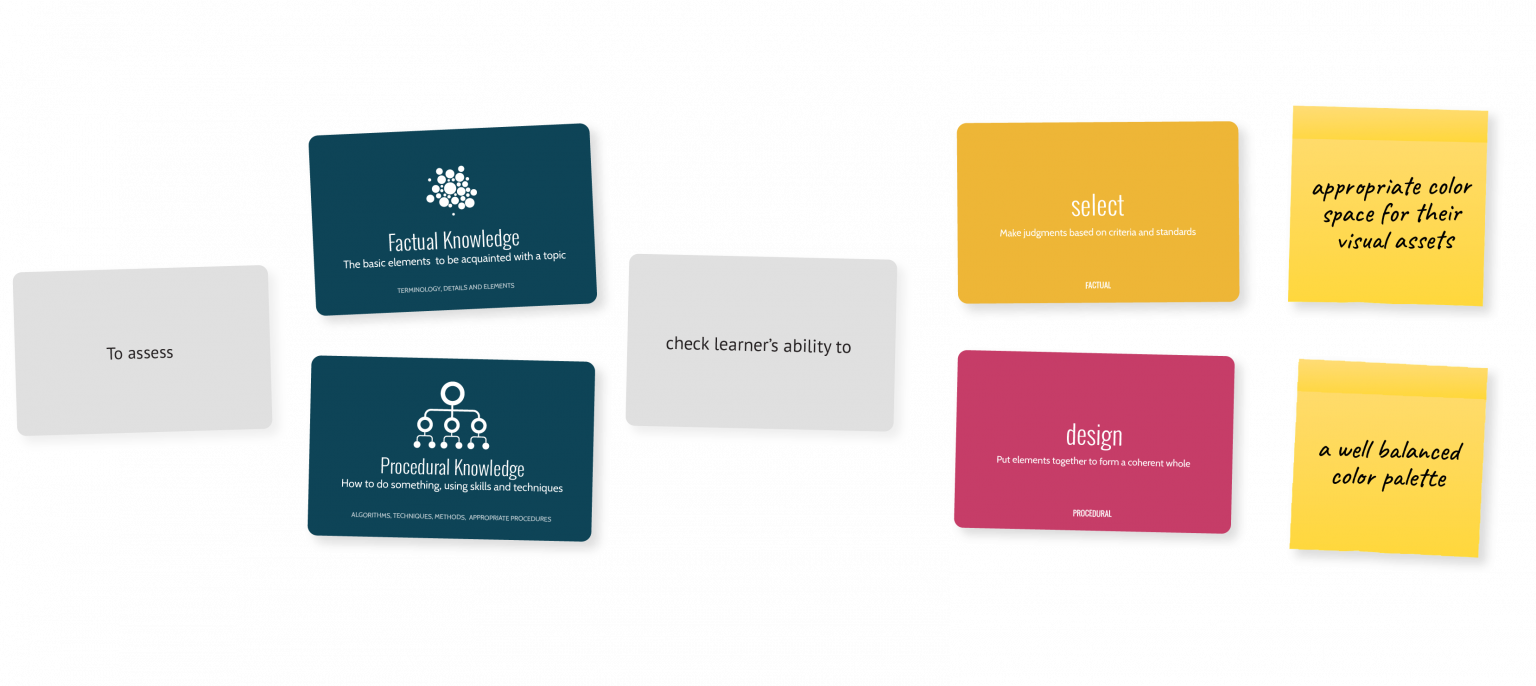

Learn how to create effective learning outcomes in a collaborative workshop with your team or faculty.

Learning Objective Design Deck
Choose between a free downloadable version of the card deck that you can print and cut to get started or a real card deck that will last. Pick what works for you.

Learning Objective Design Deck by Imaginary Institute is licensed under CC BY 4.0
Credits
Revised Bloom’s Taxonomy by: Anderson et al. (2001). A taxonomy for learning, teaching, and assessing: A revision of Bloom’sTaxonomy of Educational Objectives. New York: Longman.
Icons by: network – By Juan Pablo Bravo, CL ; dots – By Muneer A.Safiah, PS ; cube – By Ates Evren Aydinel, TR ; cube – By Gregor Cresnar ; dots – By emilegraphics, NL ; dots – By Alexander Skowalsky, HU ; Network – By Alexander Skowalsky, HU ; Sphere – By Alexander Skowalsky, HU ; cube – By Creative Stall, PK ; cube – By Three Six Five ; cubes – By CAMB, DE ; cubes – By Vertigophase, GB ; cube – By nauraicon. All icons are licensed under a CC Attribution 3.0 Unported License.
Also consider our other Learning Design Card Decks:
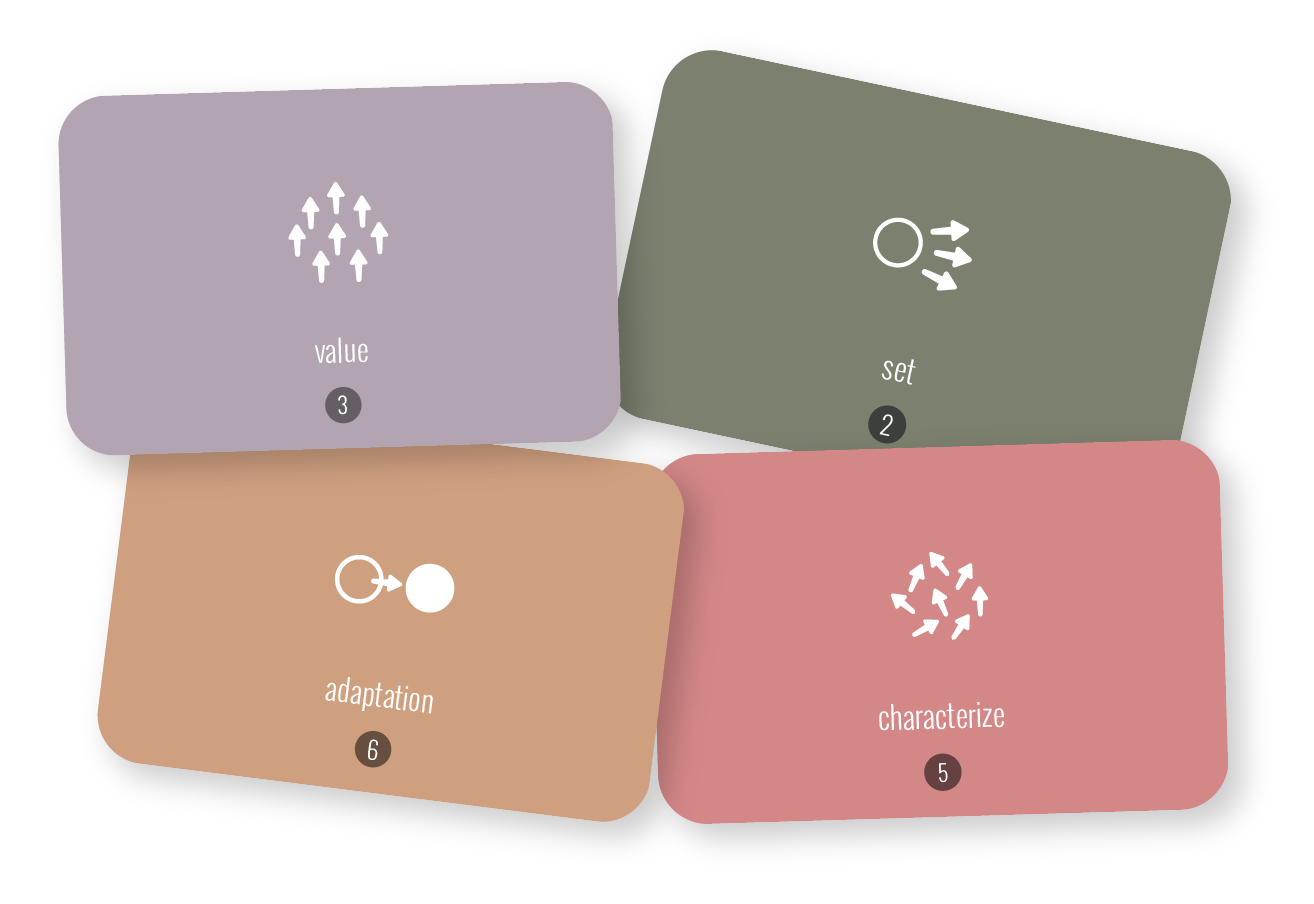
Learning Objective Design DeckExpansion Pack
Choose between a free downloadable version of the card deck that you can print and cut to get started or a real card deck that will last. Pick what works for you.

Learning Objective Design Deck Expansion Pack by Imaginary Institute is licensed under CC BY 4.0
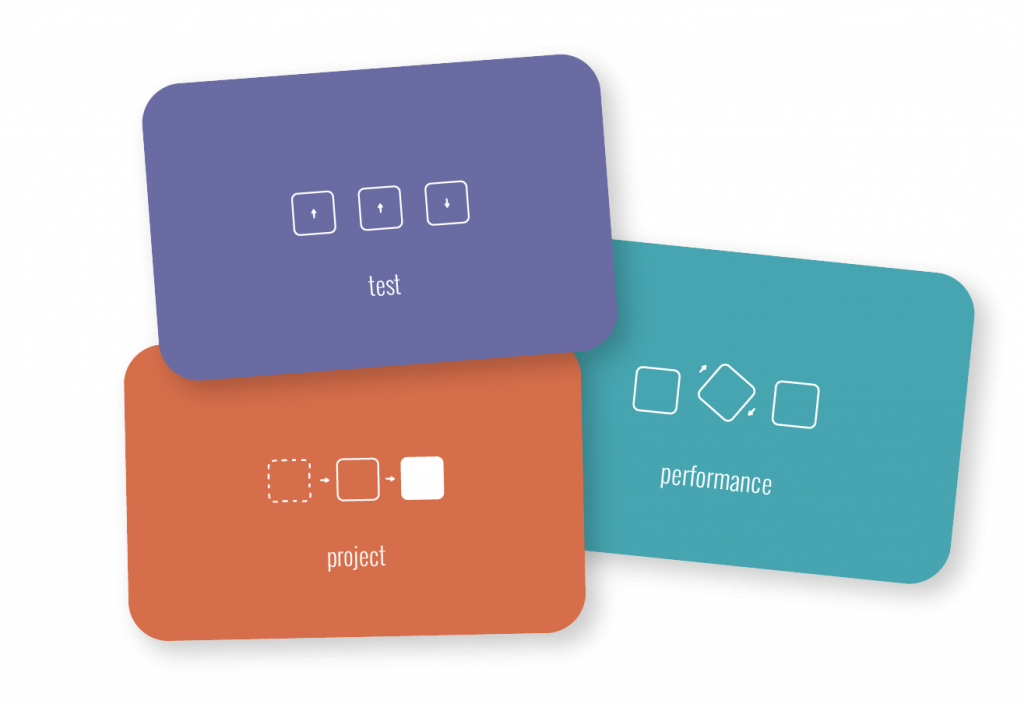
Learning Assessment Design Deck
Choose between a free downloadable version of the card deck that you can print and cut to get started or a real card deck that will last. Pick what works for you.

Learning Assessment Design Deck by Imaginary Institute is licensed under CC BY 4.0
